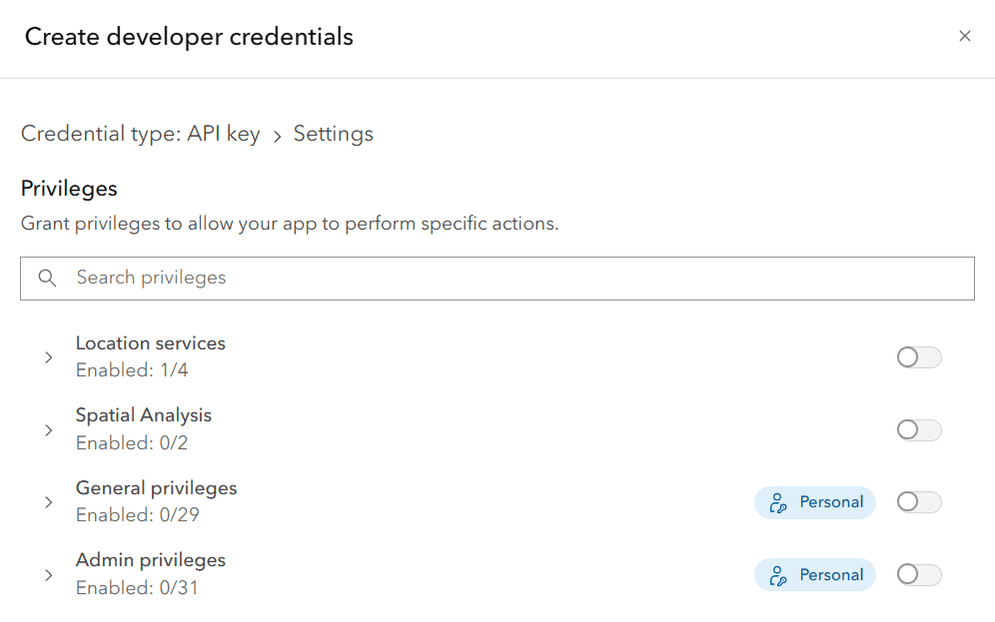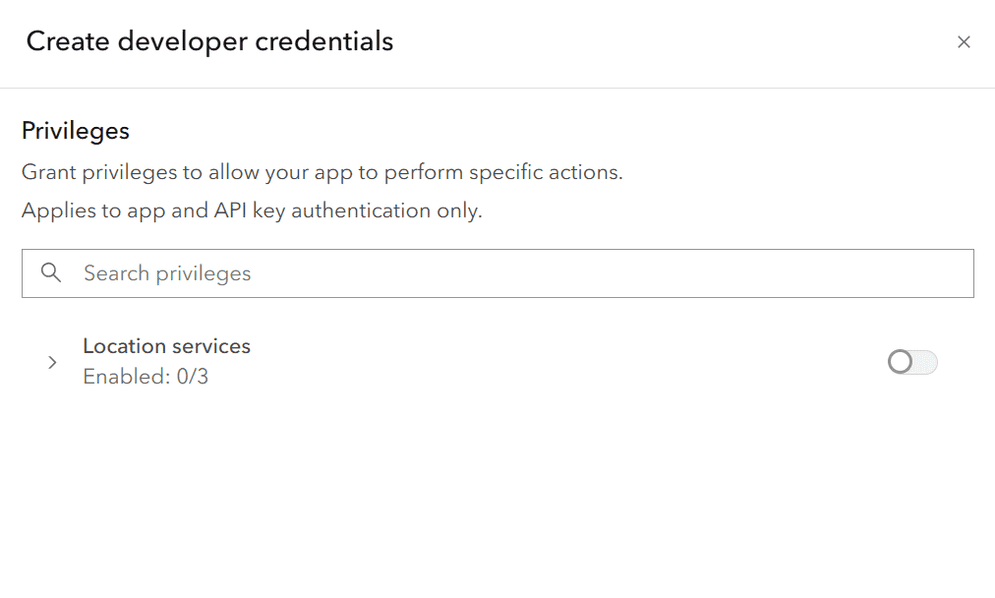Learn how to create OAuth credentials to support app authentication.
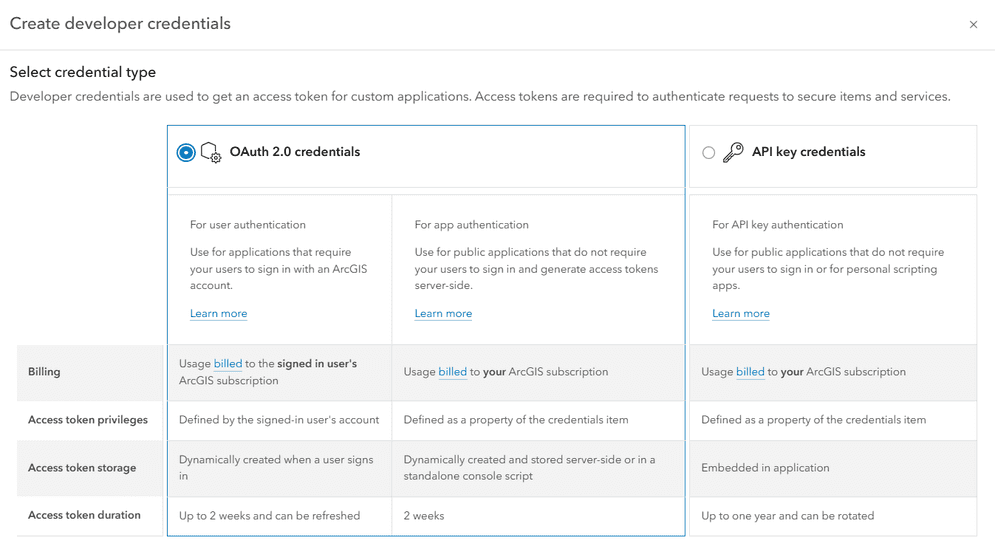
OAuth credentials are an item required to implement app authentication. They contain client and client parameters that are used to implement an OAuth 2.0 client credentials flow. The item page of OAuth credentials allows you to manage settings related to app authentication, including the authorized privileges of an application.
This tutorial shows you how to create OAuth credentials for use in app authentication and do the following:
- Configure privileges to allow your application to access ArcGIS services, content, and functionality.
- Set authorized referrer URLs.
- Manage settings of the OAuth credentials and monitor usage using its item page.
Prerequisites
Steps
Sign in to your portal
You use your portal to create and manage items, including OAuth credentials.
-
Access your portal by navigating to ArcGIS.com or the URL of your ArcGIS Enterprise portal instance.
-
Sign in with your ArcGIS account.
Create a new item
The following steps differ depending on if you have an ArcGIS Location Platform, ArcGIS Online, or an ArcGIS Enterprise account:
-
In your portal, click Content > My content > New item.

-
Click Developer credentials > OAuth credentials and click Next.

Set referrer URLs
You can set referrer URLs on OAuth credentials that restrict the credentials to only be usable from authorized domains. This is highly recommended for security purposes.
-
In the next window, scroll down to Referrer URLs.
-
Set the Referrers field to the web domains you would like to restrict the access token to. To learn more about referrers, go to OAuth credentials (for app authentication).

-
Under Application environment, select the type of environment your application will run in. This will affect when the OAuth credentials appear in portal search results.

-
Click Next.
Select privileges
You use developer credentials to configure the privileges of access tokens. For an access token to work in your application, it needs to have the correct privileges to access the content and services your app is using. Select privileges in this menu to apply them to your developer credentials.
The following steps differ depending on if you have an ArcGIS Location Platform, ArcGIS Online, or an ArcGIS Enterprise account:
-
In the Create developer credentials > Privileges window, browse the available privileges.
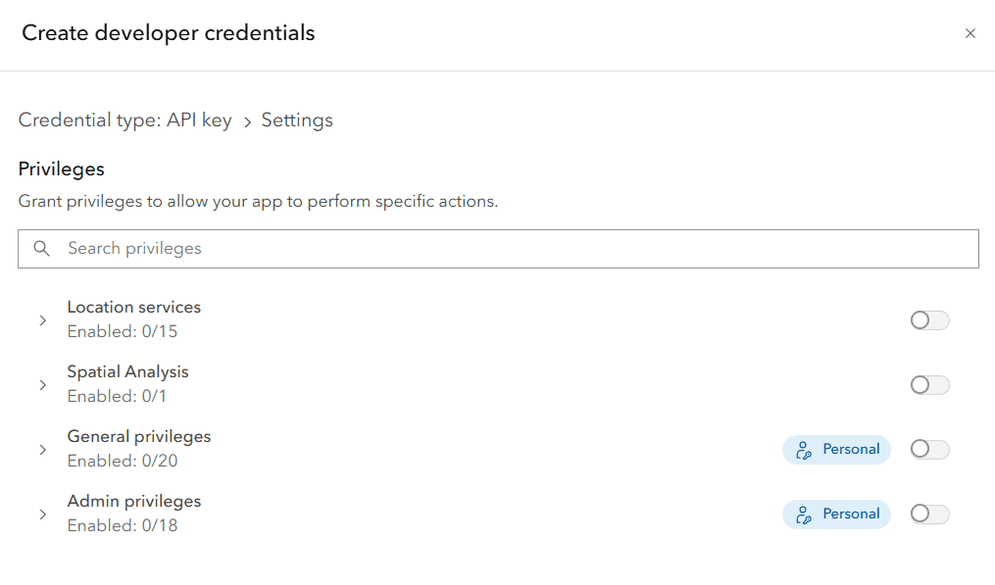
-
Browse the table below to view the available privileges, privilege strings, and descriptions based on your account type:
Category Label Privilege string Description Basemaps Basemap styles service premium:user :basemaps Allow application to access the basemap styles service. Learn more Basemaps Static basemap tiles premium:user :staticbasemaptiles Allow application to access the static basemap tiles service. Learn more Data enrichment GeoEnrichment service premium:user :geoenrichment Allow application to access the GeoEnrichment service. Learn more Elevation Elevation service premium:user :elevation Allow application to access the elevation service. Learn more Geocoding Geocode (stored) premium:user :geocode :stored Allow application to access the geocoding service and perform stored geocodes. Learn more Geocoding Geocode (not stored) premium:user :geocode :temporary Allow application to access the geocoding service and perform geocodes that are not stored. Learn more Places Place finding premium:user :places Allow application to access the places service. Learn more Routing Routing premium:user :networkanalysis :routing Allow application to access the routing service and perform standard routing operations. Learn more Routing Closest facility premium:user :networkanalysis :closestfacility Allow application to access the routing service and perform closest facility routing operations. Learn more Routing Location allocation premium:user :networkanalysis :locationallocation Allow application to access the routing service and perform location allocation operations. Learn more Routing Optimized routing premium:user :networkanalysis :optimizedrouting Allow application to access the routing service and perform optimized routing operations. Learn more Routing Origin/destination cost matrix premium:user :networkanalysis :origindestinationcostmatrix Allow application to access the routing service and generate travel cost matrices. Learn more Routing Service area premium:user :networkanalysis :servicearea Allow application to access the routing service and generate service areas. Learn more Routing Multi-vehicle routing premium:user :networkanalysis :vehiclerouting Allow application to access the routing service and perform fleet routing operations. Learn more Routing Last mile premium:user :networkanalysis :lastmiledelivery Allow application to access the routing service and perform routing operations for last mile delivery. Learn more -
Select the required privileges and click Next.
Select items (optional)
If your application will require access to specific private items, you will need to configure your developer credentials to access them. The Item access menu allows you to browse your portal's content and grant your developer credentials access to specific items.
- If your token does not require item access, click Skip. Otherwise, follow the steps below based on your account type:
-
In the Grant item access window, click Browse items.

-
Select the items you want to grant access to. You can select up to 100 items in this menu.
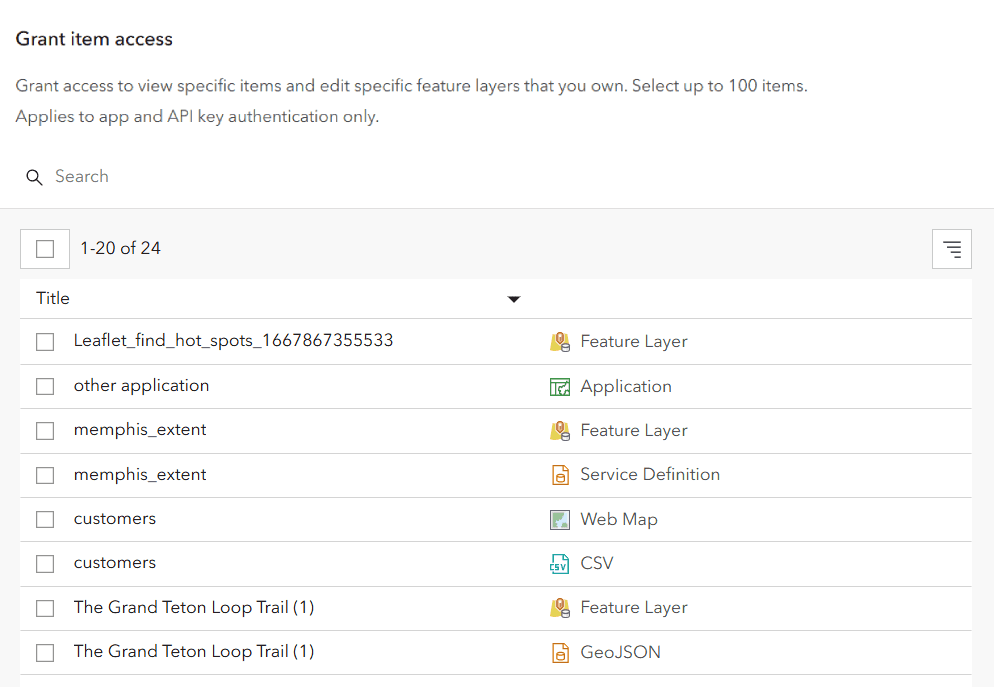
-
Click Add items.
Save the item
After configuring the properties of your API key credentials, you can save the credentials as a new item.
-
In the Create developer credentials window, set the following properties:
- Title:
My OAuth credentials (for app authentication) - Folder:
Developer credentials(Create a new folder) - Tags: Add tags related to the privileges of the credentials.
- Description: Describe the application that these developer credentials will be used in.

Click Next.
- Title:
-
In the Summary window, review the properties, privileges, and item access you have set. If you selected any privileges with a personal scope, you must acknowledge the security implications before moving forward.

-
Click Create to create your OAuth credentials.
Copy the client ID and client secret
Your OAuth credentials contain client and client parameters that are required to implement app authentication. Copy these values and paste them into your application or script.
-
On the item page of your OAuth credentials, scroll down to Credentials.
-
Copy the Client ID and Client Secret values and paste them into your application. Never expose the value of your client secret.

Manage your credentials
After creating an OAuth credentials item, its privileges and item access can be managed at any time by going to the item page.
To learn more and see management steps, go to OAuth credentials (for app authentication).
Additional resources
Learn more about app authentication in the following topics:
